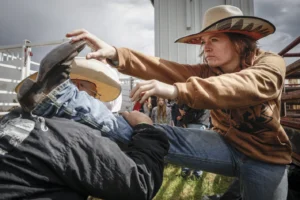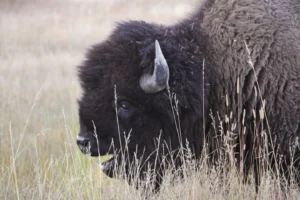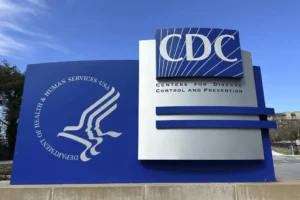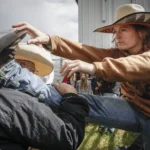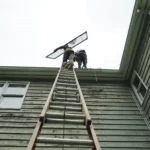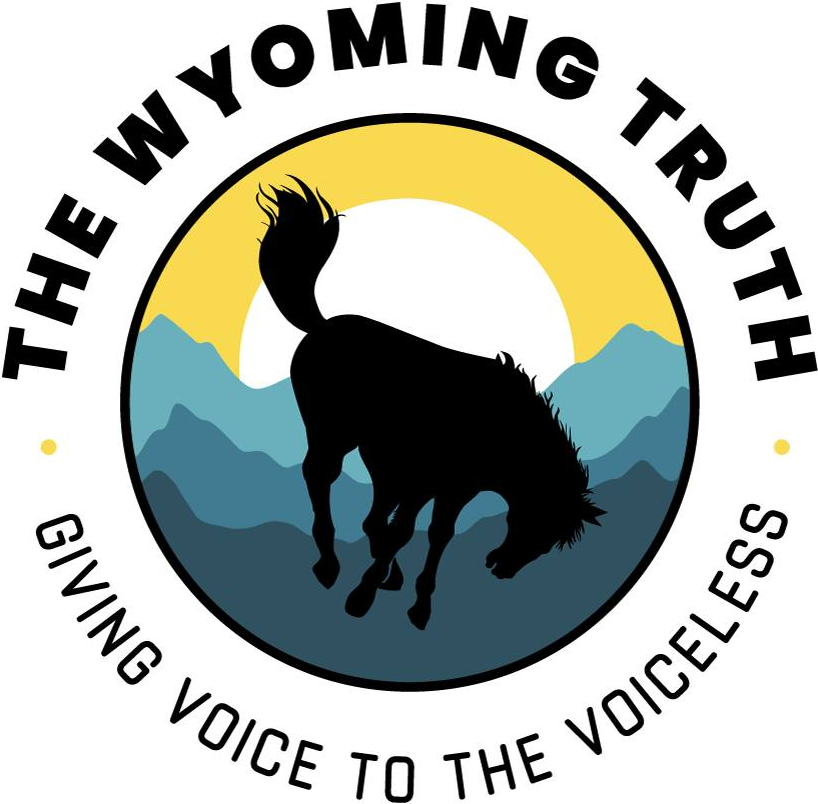Wyoming Residents Make Sacrifices in Response to Soaring Gas Prices
Several residents blame price increases on the Biden administration’s attempts to shut down oil and gas
- Published In: Other News & Features
- Last Updated: Jun 21, 2022

Dusty Martin, a 49-year-old Evanston resident, spends $72.36 to fill up his car’s tank at the Conoco station along Dewar Drive in Rock Springs. He says he can no longer can afford to go camping or boating or anywhere on the weekends because of escalating gas prices. (Wyoming Truth photo by Shen Wu Tan)
By Shen Wu Tan
Special to the Wyoming Truth
No more camping—or less camping.
That’s a lifestyle change some Wyoming residents throughout the state have made due to the rising cost of fuel over the past few months.
Dusty Martin, 49, of Evanston is one of them. He spent about $72 to fill his white 2013 Jeep Grand Cherokee with about 15 gallons of fuel at a Conoco gas station in Rock Springs on Sunday.
“We don’t go camping, we don’t go take our boat out, stuff like that because we can’t afford to,” Martin said. “They’ve shut down the pipelines. They’re not drilling and producing the oil…We have enough oil. We’re self-sufficient in the United States. We don’t need to import oil and stuff like that.”
Martin used to pay $15 to $18 a day for gas, but he is now spending more than $40 a day—and the raise he received at work doesn’t compensate for the difference.
Justin Whitmore, a 41-year-old Rock Springs resident, told the Wyoming Truth that it costs $160 to fill his 28-gallon Ford F-150 truck, up from $75.
“It’s ridiculous,” Whitmore said, while standing outside of a Kum & Go gas station in Rock Springs. “It doesn’t need to be this way. It was this way, way before the Ukraine war…They [gas prices] were already going up way before the Ukraine war even fired off. They were already going up, and with the energy policies, it’s a no brainer. You can’t limit supply like that.”
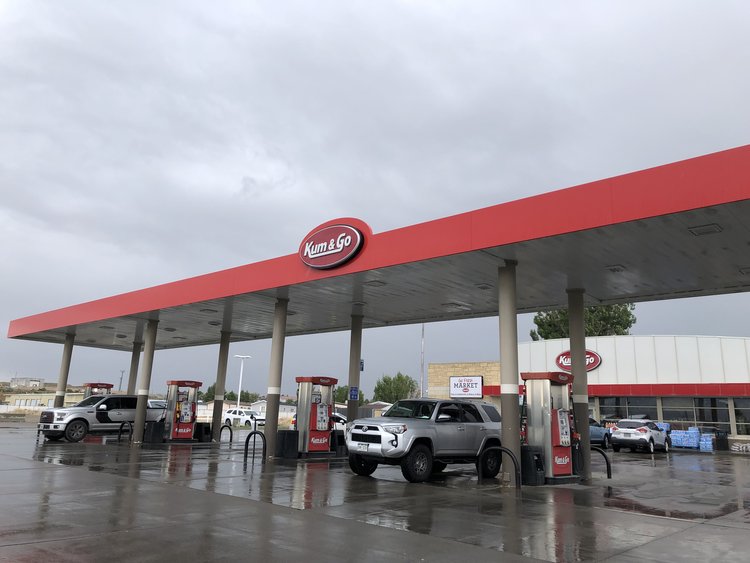
Between Whitmore and his wife, the two spend more than $500 a week to fill both their cars. In addition to nixing camping, the couple has ditched their satellite TV and streaming services to reduce monthly household expenses.
For months, President Joe Biden has blamed the war in Ukraine and oil companies for the rising costs of gas. Last week, Biden sent a letter to major oil refiners in which he pointed out that oil company profit margins had reached record highs. His administration is looking into ways to combat the higher fuel prices, including sending Americans gas rebate cards, according to media reports.
As of Monday, the national average gas price in the U.S. was $4.97 per gallon, GasBuddy data, compiled from about 11 million price reports from more than 150,000 gas stations, shows. The national average is up $1.92 per gallon from a year ago and 37.3 cents from a month ago, GasBuddy reported.
But, for the first time in nine weeks, the nation’s average gas price declined slightly, dropping 4.2 cents from a week ago, said a GasBuddy analysis Monday. However, the national average price of diesel increased 2.6 cents in the last week and stood at $5.80 per gallon as of Monday, GasBuddy found.
“Oil markets are highly volatile right now, and it is difficult to predict where gas prices will head throughout the rest of the summer,” Nicole Petersen, spokesperson for GasBuddy, told the Wyoming Truth. “If current conditions hold, we predict gas prices nationally could drop another 15-30¢/gal by the Fourth of July weekend. However, prices could begin to increase again if there are any unexpected shutdowns, such as from a major hurricane.”
Petersen noted that the Russian war on Ukraine has had an impact on gas prices from the start and continues today.
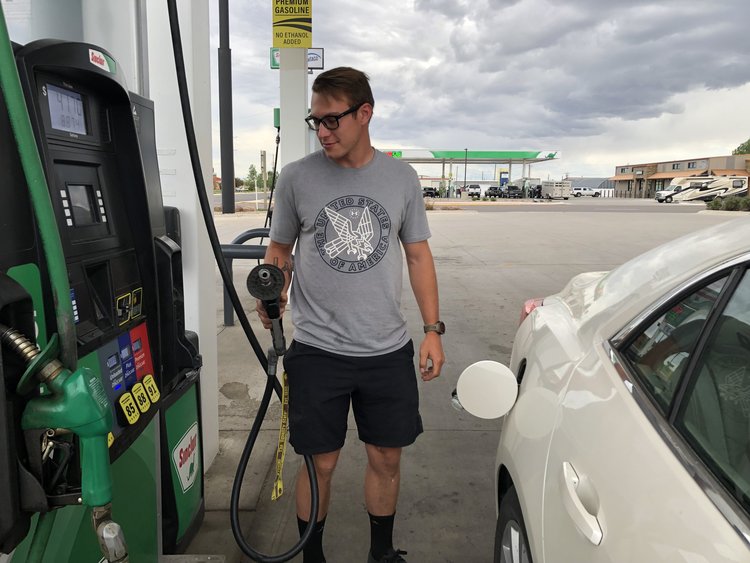
“With Russia being one of the world’s largest oil exporters, the war and resulting imposed sanctions have caused disruptions in supply, which can cause prices to spike,” Petersen said. “Other factors like post-Covid refinery bottlenecks and high seasonal demand also have been playing roles.”
In Wyoming, the average gas price as of Monday afternoon was $4.80 a gallon, down 1.2 cents from Sunday’s average, but up 54.6 cents from last month’s average, according to a GasBuddy price tracker. Compared to last year, average gas prices in the state are up almost $1.66, data shows.
In response to higher gas and diesel prices, Gov. Mark Gordon earlier this month announced the creation of a working group that will try to find solutions to address rising fuel costs. The working group includes members of the governor’s cabinet, citizens, lawmakers and representatives from the transportation and agricultural sectors.
“I’m committed to considering any and all possible ways, including tax reductions, to provide some quick relief for consumers,” Gordon said in a statement. “It is no secret that the Biden administration’s failed economic policies have directly contributed to inflation. Americans are experiencing the direct consequences of President Biden’s bungled energy policy – from the president’s 2020 executive order banning oil and gas leasing on federal lands, to its dogmatic insistence on regulation over innovation to address the issues we face today. Americans are hurting and need some relief.”
In Laramie, Justin Bradshaw, a 22-year-old Casper resident, spent $44 to fill his 2013 Chevy Malibu with eight gallons at a Sinclair gas station. He said he tries to carpool as much as possible and has cut back on camping and fishing trips in Laramie.
Bradshaw described the rising gas costs as an “avoidable downturn,” noting that he puts the blame squarely on the Biden administration for trying to shut down oil and gas.
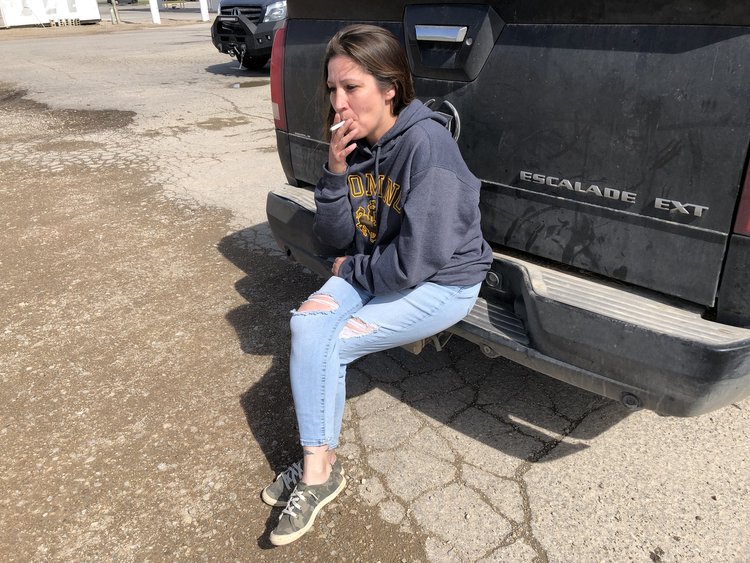
“The solution isn’t going to be giving more people direct money or rebates on fuel or anything,” Bradshaw said. “It would be to put that money into creating things like pipelines they shut down. Maybe if they wanted to try and be innovative, they could come up with solutions for delivery and be more efficient with that.”
Outside a Conoco gas station in Rawlins, Angel Snyder said it will cost more than $300 for gas to travel to and from Cedaredge, Colorado, where she was visiting family. The 44-year-old Lovell resident, who was taking a smoke break Sunday before hitting the road again in a 2005 Cadillac Escalade EXT, said it takes about 10 or 11 hours one way to get to Cedaredge from her Wyoming home. Snyder, a kitchen manager at a Maverik gas station, often hears customers complain about gas prices.
“I know our prices haven’t even hit as high as some other places,” Snyder said. “I think it will hurt a lot of these businesses, though, just because it’s going to cut down on the tourists and everything. Nobody is going to want to spend that amount of money. So, I feel like it is going to hurt a lot of places, even if it’s not just hurting our pockets…Some of these smaller towns kind of depend on the tourists to come through.”
She added, “I hope we’re going to see it [prices] as high as it’s going to get and hopefully start dropping again pretty soon.”
Only time will tell what happens to gas prices in Wyoming and elsewhere in the U.S.
But to summarize Wyoming residents’ thoughts about the current fuel prices?
“They suck,” Martin said bluntly, before hopping back in his car for the return drive to Evanston, the rain pitter-pattering on his windshield as he pulled away from the gas pump.

